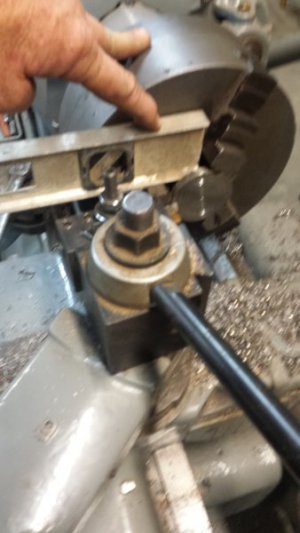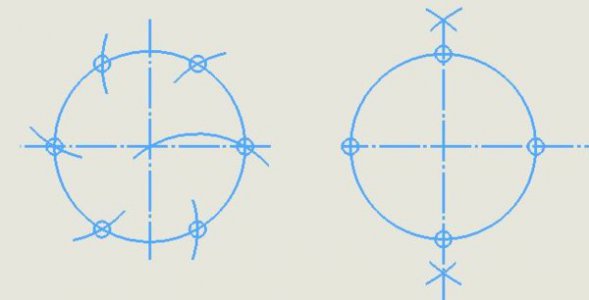Today we were tinkering on a tool for working on Atmos clocks and we needed to make a drill guide to drill holes in a cup and mount.
The cup had a center hole and 3 mounting screws at 120 degrees and we do not have any rotary or index equipment and we were just building on ideas with no drawing.
We made a slug and faced it off then drilled a 0.625 center hole then turned the cutter in to cut a groove at 0.750 radius then was trying yo figure out a reliable way to index the face.
Did not need to be exact but wanted close.
The jaws were first thought and was thinking about a stick to register the chuck to the bed but did not have suitable item handy...lazy today but something else to make for next time.
Grabbed a level and leveled the jaw then used cutter to make scribe across the groove.
Was stupid simple and we got to thinking the 45 degree vial could add additional divisions....rough ones anyway.
Just thought we would share a simple discovery.

The cup had a center hole and 3 mounting screws at 120 degrees and we do not have any rotary or index equipment and we were just building on ideas with no drawing.
We made a slug and faced it off then drilled a 0.625 center hole then turned the cutter in to cut a groove at 0.750 radius then was trying yo figure out a reliable way to index the face.
Did not need to be exact but wanted close.
The jaws were first thought and was thinking about a stick to register the chuck to the bed but did not have suitable item handy...lazy today but something else to make for next time.
Grabbed a level and leveled the jaw then used cutter to make scribe across the groove.
Was stupid simple and we got to thinking the 45 degree vial could add additional divisions....rough ones anyway.
Just thought we would share a simple discovery.

Last edited:


